#Ann Haviland
Explore tagged Tumblr posts
Text
Long before Elizabeth Taylor or Cher had signature perfume, Theda had a scent created by “perfume artist” Ann Haviland. The fragrance (not, sadly, called “Vamp”) consisted of woods and gums of Persia (“to typify her Orientalism”) and pomegranate blossoms (“typifying the depth of her soul and radiating warmth”). The results, according to the Columbus Dispatch reporter, were “subtle and hunting” (one can only assume the typesetter left the “a” out of “haunting”).
— EVE GOLDEN ⚜️ Vamp: The Rise and Fall of Theda Bara, (1998)
#American#Eve Golden#Vamp: The Rise and Fall of Theda Bara#Theda Bara#(1998)#Essence#Nuances#Parfums#Ann Haviland#Cher#Elizabeth Taylor
24 notes
·
View notes
Text
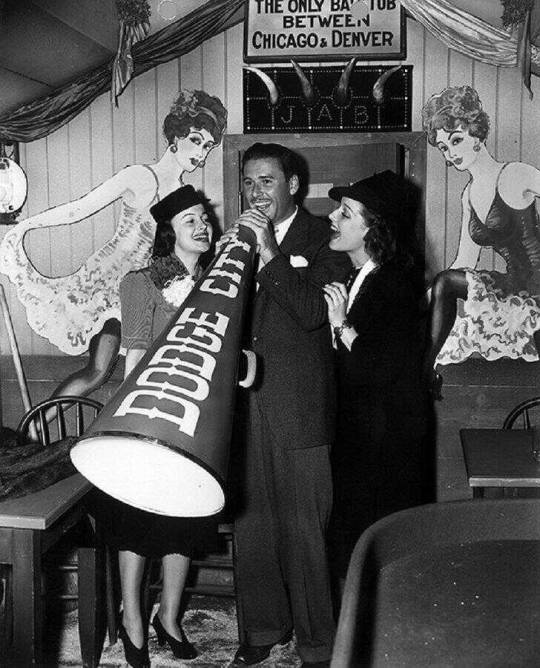
16 notes
·
View notes
Text
IWTV Season 2 Sources & References
Season 1 here (these lists are updated regularly)
Season 3 here
Cited by the Writer’s Room/Cast:
The Ethnic Avante-Garde: Minority Cultures and World Revolution (Modernist Latitudes) by Steven S. Lee
Paris Journal 1944-1955 by Janet Flanner (Genet)
The Vampire: A Casebook by Alan Dundes
Horizontal Collaborators: The Erotic World of Paris, 1920-1946 by Mel Gordon
The Sexual Outlaw: A Documentary: A Non-Fiction Account, with Commentaries, of Three Days and Nights in the Sexual Underground by John Rechy
Banjo: A Story Without a Plot by Claude McKay
Pour Que Paris Soit by Elsa Triolet and Robert Doisneau
Anne Rice’s Vampire Chronicles: An Alphabettery
The Fly cited by Jacob Anderson
King Lear by Shakespeare cited by Rolin Jones
The Third Man (1949) cited by Levan Akin
An American in Paris by George Gershwin (1928) cited by Daniel Hart
Giovanni’s Room cited by Jacob Anderson
Works directly referenced:
Melmoth the Wanderer by Charles Maturin
Sebastien Melmoth by Oscar Wilde
Ode to a Nightingale by Keats
Amadeus (1984)
The Lost Boys (1987)
Gaslight (1944)
Batman
Casablanca (1942)
Now, Voyager (1942)
Moulin Rouge (2001)
The Phantom of the Opera
Les Vampires (1915)
Dracula (1931) credit to @vampchronicles_ on twt
Le Triomphe de L’amour by Pierre de Marivaux
Existentialism is a Humanism by Jean Paul Sartre
Les Liaisons Dangereuses by Pierre Choderlos de Laclos
Romeo and Juliet by William Shakespeare
How to Win Friends and Influence People by Dale Carnegie
Hamlet by William Shakespeare
Vampire’s Kiss (1988) credit to @talesfromthecrypts
Les Morts ont tous le Meme Peau by Boris Vian credit to @greedandenby
The Most Dangerous Game by Richard Connell
Waiting for Godot by Samuel Barclay Beckett credit to @rorscachisgay on twt
An Enemy of the People by Ibsen
Anna Karenina by Leo Tolstoy
Vie de Voltaire by Marquis Condorcet
Simone de Beauvoir: A Critical Introduction by Edward Fullbrook and Kate Fullbrook credit to @iwtvfanevents
Nightwood by Djuna Barnes credit to @iwtvfanevents
Beloved by Toni Morrison
The Blacks by Jean Genet
The Books that Shaped Art History: From Gombrich and Greenberg to Alpers and Krauss by Richard Shone and Jean-Paul Stonard
A Brief History of Time by Stephen Hawking (10th anniversary edition)
Artists, Art, and Salons:
R-26
Palma Vecchio
Andre Fougeron
Elsa Triollet
Fred Stein
Lisette Model
Gordon Parks
Miguel Barcelo
Taxidermied Javelina by Chris Roberts-Antieau
Ai WeiWei (wallpaper)
David Hockney (Lemons)
Wols
The Kiss of Judas by Jakob Smits
Salome by Louis Icart
Ophelia by John Everett Millais
Shelter by Peter Macon
The Kiss by Edvard Munch
The Vampire or Love and Pain by Edvard Munch credit @iwtvasart
Ruiter on Horse by Reiger Stolk credit @ iwtvasart
Portrait of Frank Burty Haviland by Modigliani credit @iwtvasart
Self-Seers II (Death and Man) by Egon Schiele credit to @90sgreggaraki
The Sleep of Reason Produces Monsters by Goya
Aicha by Felix Vallotton
Cariatide by Modigliani
Nature Morte Au Pain Et Au Cocteau by Louis Marcoussis
Untitled by Julio Gonzalez
Embrace by Mikulas Galanda
Trees on a Mountain Slope by Ernst Kirchner
Landscape Paris by Henry Lyman Sayen
Tabac 56 by Oscar Garcia
Spirituals by Lillian Richter Reynolds
Movie & Play Posters on set (in chronological order by year):
Tarzan and his Mate (1934)
Avec le Sourire (1936)
Les Deux Gosses (1936)
Le Jour Se Leve (1939) about a man who commits murder as a result of a love triangle and locks himself in his apartment recounting the details as the police attempt to arrest him. Credit to @laisofhyccara
Nuit de Décembre (1940)
Mademoiselle Swing (1942) about a girl who follows a troupe of swing musicians to Paris.
Les Enfents du Paradis (1945) about a woman with many suitors including an actor and an aristocrat.
Fantomas (1946) about a sadistic criminal mastermind. This version includes a hideout in the catacombs where he traps people.
Quai des Orfevres (1947) watch here
Monsieur Vincent (1947)
Le Cafe du Cadran (1947) about a wife’s affair with a violinist.
La Kermesse Rouge (1947) film about a jealous artist who locks up his younger wife and a fire breaks out while she’s trapped.
Morts Sans Sepulture by Jean-Paul Sartre (play) also published in English translations as “The Victors” or “Men Without Shadows” about resistance fighters captured by Vichy soldiers struggling not to give up information.
Mon Faust by Paul Valery (play)
Musical Influences: @greedandenby collected all music used in Season 2 here.
Henry Cowell
Meredith Monk
Howling’ Wolf
Shirley Temple
Jason Lindner Big Band
The Teeth
Carlos Salzedo
Alice Coltrane
Thelonius Monk
David Lang
Caroline Shaw
Gadfly by Shostakovich (for Raglan James)
musical career of Martha Argerich
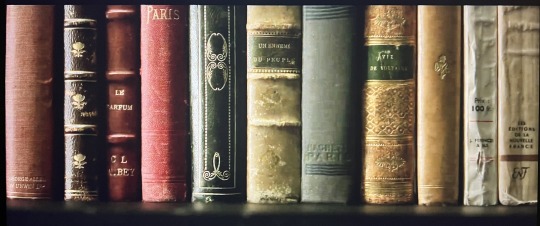
#iwtv#season 2#given that the posters are starting to come out of Prague I decided to start compiling sources and references in one place#Set design#production design#iwtv art
307 notes
·
View notes
Note
what's the best way to serve whale?
am hungee
Can’t attest—I have not eaten whale.
Muktuk is a traditional Inuit food. It’s skin and blubber usually from bowheads (but also beluga and narwhal) that’s diced small and often eaten raw. It can also be prepared in other ways like frying or pickling. Very high in Vitamin D & C.
Turning to my 19th c. American whalers, it being my schtick and all, they tended to not be particularly interested in eating whale. Nor were whales hunted for meat. But sometimes the odd recipe comes out here and there. John Martin, whaler on the Lucy Ann, 1840s talked about ‘roasting the top of a whale’s head’ that they were otherwise processing.
“The top of a right whale’s head is covered with barnacles & small crabs. When roasted they are good eating. They also take part of his lip and render it out in the hot oil. When eaten with pepper & vinegar it tastes very much like soused tripe.”
Mary Lawrence, whaling wife on the Addison, 1850s also mentioned eating whale up North:
“We have been eating bowhead meat for several days, made with pork into sausage cakes, also fried, and it is really good eating, far before salt pork in my estimation.”
J.E. Haviland, greenhand on the Baltic 1850s shared a similar recipe for porpoise, which is similar enough.
“We had it for Breakfast this morning. The way it is prepared at sea is to take + hash it up very fine seasoned with sage pepper + salt and then made in small balls + fried or baked in pork + I can say from experience it is proper good.”
William Tripp, boatsteerer on the John R. Manta, 1920s,
“The meat was cooked as steaks, while some was ground and made into 'whalemeat balls.' It was eaten by all hands and much relished as the first frest meat since leaving port."
John Ross Browne, writer on an unnamed whaler in the 1840s, talked about snacks whilst trying out. In addition to frying saltwater-soaked sea biscuits and celebratory donuts in the whale oil, sometimes whalers would eat the leftover ‘cracklings’, i.e. crispy bits of whale skin left over after the process, as well as:
“Sometimes, when on friendly terms with the steward, they make fritters of the brains of the whale mixed with flour, and cook them in the oil. These are considered a most sumptuous delicacy. Certain portions of the whale's flesh are also eaten with relish, though, to my thinking, not a very great luxury, being coarse and strong. Mixed with potatoes, however, like " porpoise balls," they answer very well for variety. A good appetite makes almost any kind of food palatable. I have eaten whale-flesh at sea with as much relish as I ever ate roast-beef ashore.”
Not everyone’s into it, though. When John Langdon and other crew members aboard the St. Peter, 1840s, came to air grievances about the captain expecting them to be content with eating spoiled beef, the captain,
“rowse[d] up a little telling us how he had lived on whale and blackfish meat for a time on the Nor’west; but this would not go down with us and we demanded state’s allowance. He saw we were in good earnest so after while concluded to give us good beef.”
And lastly, from Moby-Dick, Stubb’s preferred method of cooking whale steak which he berated the cook with:
“Hold the steak in one hand, and show a live coal to it with the other; that done, dish it; d’ye hear?”
#people can expect that if they send a silly ask I will still answer with Primary Sources and a narrative arc.#asks#anonymous#awhalin
95 notes
·
View notes
Text












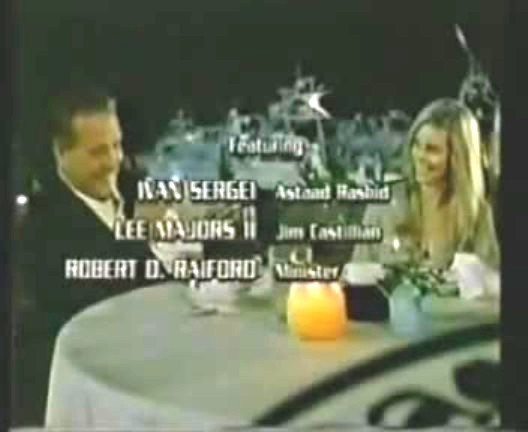

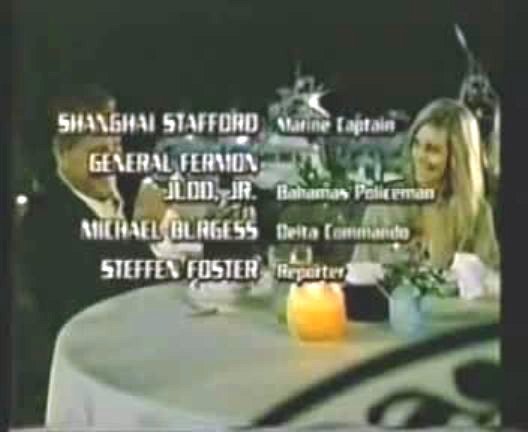

Bionic Ever After - CBS - November 29, 1994
Science Fiction
Running Time:
Stars:
Lee Majors as retired Air Force Colonel Steve Austin
Lindsay Wagner as former tennis pro Jaime Sommers
Richard Anderson as Oscar Goldman
Farrah Forke as Kimberly Harmon / Haviland
Martin E. Brooks as Dr. Rudy Wells
Alan Sader as John MacNamara
Anne Lockhart as Carolyn MacNamara
Geordie Johnson as Miles Kendrick
Featuring:
Ivan Sergei as Astaad Rashid, a charismatic tennis star
Lee Majors II as Jim Castillian, an OSI agent
Robert D. Raiford as Minister
James Shanta as Rock
Michael Hartson as Stone
Ann Pierce as Connie Havilland
Michael Camden Richards as NEC Technician
Shanghai Stafford as Marine Captain
General Fermon Judd, Jr. as Bahamas Policeman
Michael Burgess as Delta Commando
Steffen Foster as Reporter
#Bionic Ever After#TV#CBS#Science Fiction#1990's#1994#Lee Majors#Lindsay Wagner#Richard Anderson#Farrah Forke#Martin E Brooks
14 notes
·
View notes
Text
Canales de Youtube con información sobre shifting (actualizado)
Ya hace un tiempo que hice mi anterior lista, así que voy a actualizar con canales nuevos, los que siguen activos, y otros que ya no están activos pero siguen teniendo contenido útil e interesante.
INFORMACIÓN Y CONSEJOS EN ESPAÑOL Beautiful Shifter Entre Dimensiones Hey Ryo Honilemon Jo Bárcenas Luna's Moon Nale Cebras Nati Godoy Paulina Grajeda Scared Sly
INFORMACIÓN Y CONSEJOS EN INGLÉS CrissOxy Em & Te Emme Jester Juston Shifting Experience Kami Kiera Ann Lauren Lilith Leigh Own Your Powers Reya Singh Tessaverse
MEDITACIONES Y MÉTODOS GUIADOS EN ESPAÑOL Chezz (borró todo su contenido, pero dejó su meditación y su método) Shift with Miel Entre Dimensiones Honilemon Jo Bárcenas Nale Cebras
MEDITACIONES Y MÉTODOS GUIADOS EN INGLÉS Alunir Elle SM Goodnight Subliminals Joy Haviland Melody Pond Rayven's Nest Rose Jyoti
PODCASTS EN INGLÉS Get Shifty Makeshift Podcast Reality Runners
Canales inactivos o que no son sólo sobre shifting, pero siguen teniendo contenido útil, aunque puede estar desactualizado Anna RxM (inglés) Cass Relf (inglés) Kristeau (inglés) Oriboos el Guía Shifting (español) Shifters Cove (podcast en inglés) Shimmey Shay (inglés) Starlight (español)
Y si sois nuevos y no queréis volveros locos con tanta información, los que más recomiendo son los de Reya Singh, Entre Dimensiones y Nati Godoy (por ser shifters con mucha experiencia y que explican bien los conceptos básicos), el podcast Get Shifty y las meditaciones de Alunir.
17 notes
·
View notes
Text
Octobre MMXXIV
Films
Quartet (2012) de Dustin Hoffman avec Maggie Smith, Tom Courtenay, Billy Connolly, Pauline Collins, Sheridan Smith, Michael Gambon, Andrew Sachs et Gwyneth Jones
Bob le flambeur (1956) de Jean-Pierre Melville avec Roger Duchesne, Isabelle Corey, Daniel Cauchy, Guy Decomble, Simone Paris, André Garret, Claude Cerval et Colette Fleury
Indian Palace (The Best Exotic Marigold Hotel) (2011) de John Madden avec Judi Dench, Bill Nighy, Tom Wilkinson, Maggie Smith, Celia Imrie, Dev Patel, Ronald Pickup et Penelope Wilton
Grosse Fatigue (1994) de et avec Michel Blanc et aussi Carole Bouquet, Philippe Noiret, Josiane Balasko, Marie-Anne Chazel, Christian Clavier, Guillaume Durand, Charlotte Gainsbourg, David Hallyday, Estelle Lefébure et Gérard Jugnot
L'Air de rien (2012) de Grégory Magne et Stéphane Viard avec Grégory Montel, Fred Scotlande, Céline Milliat-Baumgartner, Michel Delpech, Martine Schambacher, Miossec, Jérôme Huguet, Benoît Belleville et Pauline Moulène
Code Mercury (Mercury Rising) (1998) de Harold Becker avec Bruce Willis, Miko Hughes, Alec Baldwin, Chi McBride, John Carroll Lynch, John Doman, Peter Stormare et Kim Dickens
Le Privé (The Long Goodbye) (1973) de Robert Altman avec Elliott Gould, Nina van Pallandt, Sterling Hayden, Mark Rydell, Henry Gibson, David Arkin, David Carradine et Arnold Schwarzenegger
Mon oncle Benjamin (1969) d'Édouard Molinaro avec Jacques Brel, Claude Jade, Bernard Alane, Paul Frankeur, Rosy Varte, Lyne Chardonnet, Robert Dalban, Bernard Blier et Armand Mestral
Le Tueur triste (1984) de Nicolas Gessner avec Guy Marchand, Edwige Feuillère, Michel Creton, Béatrice Agenin, Franck Olivier Bonnet, Jean Louis Richard, Jacques François, Amélie Gonin et Marcelle Barreau
Indian Palace : Suite royale (The Second Best Exotic Marigold Hotel) (2015) de John Madde avec Judi Dench, Maggie Smith, Bill Nighy, Dev Patel, Celia Imrie, Ronald Pickup, Diana Hardcastle, Richard Gere et Tina Desai
Gremlins 2 : La Nouvelle Génération (Gremlins 2: The New Batch) (1990) de Joe Dante avec Zach Galligan, Phoebe Cates, John Glover, Robert Prosky, Robert Picardo, Christopher Lee, Haviland Morris, Dick Miller, Jackie Joseph et Kathleen Freeman
L’Été meurtrier (1983) de Jean Becker avec Isabelle Adjani, Alain Souchon, Suzanne Flon, Jenny Clève, Maria Machado, Évelyne Didi, Jean Gaven, François Cluzet, Michel Galabru et Roger Carel
Baisers volés (1968) de François Truffaut avec Jean-Pierre Léaud, Claude Jade, Delphine Seyrig, Michael Lonsdale, Harry-Max, André Falcon, Daniel Ceccaldi, Claire Duhamel et Catherine Lutz
Key Largo (1948) de John Huston avec Humphrey Bogart, Lauren Bacall, Edward G. Robinson, Claire Trevor, Lionel Barrymore, Thomas Gomez, Harry Lewis et John Rodney
Soleil rouge (1971) de Terence Young avec Charles Bronson, Ursula Andress, Toshirō Mifune, Alain Delon, Capucine, Bart Barry et Lee Burton
Le Chien des Baskerville (The Hound of the Baskervilles) (1958) de Terence Fisher avec Peter Cushing, André Morell, Christopher Lee, Marla Landi, David Oxley, Francis De Wolff, Miles Malleson et Ewen Solon
L'Arnaque (The Sting) (1973) de George Roy Hill avec Paul Newman, Robert Redford, Robert Shaw, Charles Durning, Ray Walston, Eileen Brennan, Harold Gould, John Heffernan, Dana Elcar et Dimitra Arliss
Au service de Sara (Serving Sara) (2002) de Reginald Hudlin avec Matthew Perry, Elizabeth Hurley, Vincent Pastore, Bruce Campbell, Cedric the Entertainer, Amy Adams et Terry Crews
Tirez sur le pianiste (1960) de François Truffaut avec Charles Aznavour, Marie Dubois, Nicole Berger, Michèle Mercier, Serge Davri, Claude Mansard et Richard Kanayan
Séries
L'été rouge
Episode 1 - Episode 2 - Episode 3 - Episode 4 - Episode 5
Castle Saison 8
M. et Mme Castle - Meurtre a cappella - Témoin-clé - L'Espion qui venait du froid - Huis clos - Le Rêve américain - Escapade à L.A. - Le ver est dans le fruit - Le Cœur ou la Raison - Votre mort est un ordre - Trahisons - L'immortel - Beaucoup de bruit pour un meurtre - La Fin du monde - Tirs croisés
Psych Saison 1, 2, 3
Voyances et Manigances - T-R-I-C-H-E-U-R - Qu'il parle maintenant ou se taise à jamais - Esprit, es-tu là ? - 9 vies - Champ de bataille - La Maison hantée - Shawn chez les super-héros - Souvenirs, souvenirs - La Guerre de l'étoile - Coup de soleil - Avis de meurtre - Jeu, Set et Meurtre - Poker menteur - Esprits féminin - Les Nouvelles Stars - 65 Millions d'années plus tôt - Un médium de trop - Trop facile pour être possible - Petit… mais costaud - Un plat qui se mange froid - Les Petits Génies - Recherche nounous désespérément - Chasseurs de primes - Un mort au pied du sapin - Mariage en sursis - Coups de vieux - Un r��le de composition - Dans le secret de la loge - Fashion victimes - Une nuit au musée - Chasse aux fantômes - La Folle Soirée de Shawn - Le médium qui tombe à pic - La Chasse au trésor - Au pays de l'or noir - Henry les bons tuyaux - Comme sur des roulettes - Haut les mains !
Friends Saison 1, 2, 3
Celui qui avait un singe - Celui qui rêve par procuration - Celui qui a failli rater l'accouchement - Celui qui fait craquer Rachel - Celui qui a une nouvelle fiancée - Celui qui détestait le lait maternel - Celui qui est mort dans l'appart du dessous - Celui qui avait viré de bord - Celui qui se faisait passer pour Bob - Celui qui a oublié un bébé dans le bus - Celui qui tombe des nues - Celui qui a été très maladroit - Celui qui cassait les radiateurs - Celui qui se dédouble - Celui qui n'apprécie pas certains mariages - Celui qui retrouve son singe : première partie - Celui qui retrouve son singe : deuxième partie - Celui qui a failli aller au bal de promo - Celui qui a fait on ne sait quoi avec Rachel - Celui qui vit sa vie - Celui qui remplace celui qui part - Celui qui disparaît de la série - Celui qui ne voulait pas partir - Celui qui se met à parler - Celui qui affronte les voyous - Celui qui faisait le lien - Celui qui attrape la varicelle - Celui qui embrassait mal - Celui qui rêvait de la princesse Leia - Celui qui a du mal à se préparer - Celui qui avait la technique du câlin - Celui qui ne supportait pas les poupées - Celui qui bricolait - Celui qui se souvient - Celui qui était prof et élève - Celui qui avait pris un coup sur la tête - Celui pour qui le foot c'est pas le pied - Celui qui fait démissionner Rachel - Celui qui ne s'y retrouvait plus - Celui qui était très jaloux - Celui qui persiste et signe - Celui que les prothèses ne gênaient pas - Celui qui vivait mal la rupture - Celui qui a survécu au lendemain - Celui qui était laissé pour compte - Celui qui s'auto-hypnotisait
Affaires sensibles
La chute de Nicolas Hulot - Blur vs Oasis : la bataille d'Angleterre - Août 44, La Libération de Paris, Épisode 1/2 : Août 44, des Parisiens en armes - Août 44, La Libération de Paris, Épisode 2/2 : Eté 44, De Gaulle, la marche d’un président - Docteur Petiot, faux résistant, vrai tueur - Hitler l'insaisissable cadavre - Benito Mussolini, un cadavre en cavale - Le mystère des noyés de la Deûle - Les trois de West Memphis - "Naissance d’une nation" : Naissance d’une contestation - Little Rock, neuf lycéens noirs contre la ségrégation - Emmett Till, le lynchage de trop - Marseille 1973, quand le racisme tue en toute impunité - L'argent russe du Front National - Affaire Alstom : la guerre secrète - Le procès de Lady Chatterley - Les survivants de la Cordillère des Andes - "Tcherno-Blaye" : le scénario d'un Tchernobyl français ? - La tour Montparnasse ou la folie des grandeurs en direct des Rendez-vous de l'histoire de Blois - « Sans haine, sans arme, ni violence » : le casse du siècle de Nice - "La Grande Bouffe" ou le festin orgiaque - Taylor Swift, le phénomène total - L’abominable homme des neiges, une rencontre au sommet
Brokenwood Saison 9, 3
Comme chien et chat - En plein cœur - La mariée était en cuir - Le veuf noir
Le Coffre à Catch
#188 : La dernière avec UVA !
Les Brigades du Tigre : « Les Années-Folles » Saison 6
Les Princes de la nuit - Rita et le Caïd - La Grande Duchesse Tatiana - Les Fantômes de Noël - La Fille de l'air - Lacs et Entrelacs
Commissaire Moulin Saison 1
Le Diable aussi a des ailes - Intox - Fausses notes - Les Brebis égarées
Les Simpson Saison 3
Mon pote Michael Jackson - Lisa va à Washington - Le Palais du Gaucher - Le Petit Parrain - Une belle simpsonnerie - Tel père, tel clown - Simpson Horror Show II - Le Poney de Lisa - Un père dans la course - Un cocktail d'enfer - Burns Verkaufen der Kraftwerk - Vive les mariés - Un puits de mensonges - L'Enfer du jeu - Homer au foyer - Bart le tombeur - Homer la foudre - Le Flic et la Rebelle - Chienne de vie - Imprésario de mon cœur - La Veuve noire - Le Permis d'Otto Bus - Séparés par l'amour - Le Retour du frère prodigue
Belphégor ou le Fantôme du Louvre
Le Louvre - Le secret du Louvre
Nestor Burma saison 6
Panique à Saint-Patrick - Atout cœur
Rematch
Episode 1 - Episode 2 - Episode 3 - Episode 4 - Episode 5 - Episode 6
Brooklyn Nine-Nine Saison 1, 2, 3, 4, 5
Halloween - Halloween II - Halloween III - Halloween IV - Halloween V
Le tribunal de l'impossible
La Bête du Gévaudan
Spectacles
Pink Floyd: Live at Pompeii, Director's Cut (1972) d'Adrian Maben
Chers parents (2024) de Emmanuel Patron & Armelle Patron avec Elise Diamant, Bernard Alane, Emmanuel Patron, Rudy Milstein et Frédérique Tirmont
Stevie Wonder: Live at Last (2008)
R.E.M : Perfect Square (2004)
Bénabar : la tournée des indociles (2022)
Le Chien des Baskerville (1974) de Jean Marcillac avec Raymond Gerome, André Haber, Christian Alers, Jean Pierre Gernez, Bernard Musson, Christiane Moinet, Pierre Hatet, Colette Teissedre, Robert Bazil, Liliane Patrick et Jean Jacques Steen
Livres
Putzi de Thomas Snégaroff
Kaamelott, tome 10 : Karadoc et l'Icosaèdre d'Alexandre Astier et Steven Dupré
Lucky Luke, tome 28 : Le Pony Express de Morris, Xavier Fauche et Jean Léturgie
Philip Marlowe : Le Grand Sommeil de Raymond Chandler
OSS 117 : Agonie en Patagonie de Jean Bruce
Batman : Un long Halloween de Jeph Loeb et Tim Sale
0 notes
Photo

𝟖 𝐝𝐚𝐲𝐬 ♡ 𝐆𝐚𝐛𝐫𝐢𝐞𝐥'𝐬 𝐈𝐧𝐟𝐞𝐫𝐧𝐨 𝐌𝐨𝐯𝐢𝐞 𝐏𝐚𝐫𝐭 𝐈𝐈
#gabriel's inferno#gabrielsinfernomovie#professor pain#ann singer#haviland stillwell#giulio berruti#gabriels inferno#the gabriel series#passionflix#edit
9 notes
·
View notes
Text
Thoughts on Lady in a Cage (1964)

Lady in a Cage is like if Tennessee Williams wrote Panic Room.
The story itself is straightforward: middle-aged poet Mrs. Hilyard is alone at home during the Fourth of July weekend. Incapacitated by a broken hip, she has to use an elevator to navigate between floors. Unfortunately, a power outage stops the elevator mid-ascent, leaving her trapped and vulnerable-- especially when an assortment of criminals (an alcoholic burglar, a desperate hustler, and three garden variety psychopathic hoodlums) come a-calling to rob and terrorize her.

Mrs. Hilyard’s character is a cross between the fluttery, aristocratic pretensions of Blanche Dubois from A Streetcar Named Desire and the maternal clinginess of Violet Venable from Suddenly, Last Summer. She lives with her 29-year-old son Malcolm and treats him with a weird blend of motherly manipulation and romantic affection: he calls her “darling” and she begs him to leave her little letters before going off on a trip, blurring the lines of their relationship in a subtly disturbing way. Malcolm only has about five minutes on the screen, but his melancholy, resigned presence resonates throughout the film’s 95-minute runtime. Ultimately, Mrs. Hilyard’s predicament forces her to take a good look at herself. Her assumptions about her own character-- that she’s sensitive, loving, and empathetic-- melt like ice in the sun over the course of her imprisonment.
Lady in a Cage is not considered one of De Havilland’s better projects or performances. I’ve seen some people comment that it’s painful to watch De Havilland “demean” herself with some of the things she’s called to do in this movie, but I was impressed by how bold her performance was-- even if it pushes a bit into camp territory, her terror at both the criminals and her own self-discovery is powerful. It’s a performance that fits the stifling, nightmarish atmosphere the film creates.

De Haviland isn’t the only one channeling Tennessee Williams: as the chief hoodlum, James Caan is like Stanley Kowalski if he were one of the droogs from A Clockwork Orange. Some viewers dismiss Caan’s acting as a cheap imitation of Brando, but I thought he was the perfect villain for this kind of thriller, threatening and oddly alluring in his open honesty about his own monstrosity. One could almost interpret him as the manifestation of the smothered Malcolm’s torment and rage, especially once Caan starts wearing the other man’s clothes.

The other standout performance comes from Ann Sothern as the hustler Sade. She is the one character in this movie’s savage universe that comes close to being sympathetic and she is certainly the most three-dimensional of the other supporting criminals, who tend to resemble caricatures more than real people. Originally in the house for a quick buck, she becomes Caan and company’s prey just as much as Mrs. Hilyard is, and her dread, self-loathing, and terror register strongly in the film’s last third.

Lady in a Cage was demonized by critics as a sleazy shocker upon release. Nowadays, it’s commonly hailed as either a campy “psychobiddy” thriller like Whatever Happened to Baby Jane or as a chilling reflection of the social turbulence of the 1960s. It’s easy to write the movie off as reactionary horror (Mrs. Hilyard laments that Caan’s thug is the inevitable product of “the welfare state” her taxes support), but this ignores how Mrs. Hilyard comes to find that she herself-- despite believing she is the only “thinking, feeling creature” in her invaded home-- is also capable of monstrous domination and dehumanizing behavior towards others. It’s a quintessentially 1960s brand of thriller and would make an interesting companion piece to Psycho.
22 notes
·
View notes
Note
Do you have any reading recs about perfumes?
I haven’t read most of these yet— but here’s my current perfume reading list. Enjoy! I might update this with more as I move along.
ARTICLES
���Smell, Memory’ by Rachel Syme
‘The Ugly History of Beautiful Things: Perfume’ by Katy Kelleher
‘In 1902, Audiences Turned Up Their Noses at the First Perfume Concert’ by Allison Meier
‘Kazimir Malevich’s Little-Known Perfume Bottle’ by Jillian Steinhauer
‘Getting a Whiff of Perfume’s Illusions’ by Sonya Vatomsky
‘LAYERS: Pushing Through the Arts to Perfume’ by Dannielle Sergent
‘Scenting Shakespeare’s Tragic Heroines: Cleopatra and Lady Macbeth’ by Lauryn Beer
‘Some Thoughts on Scent Criticism’ by Miguel Matos
‘Scent and Healing: The Transformative Power of Perfume’ by Ida Meister
‘Here’s Why Perfume Description Are Never About Smell’ by Elyse Hauser
‘Heaven Scent’ by Danielle del Sol
‘Ann Haviland, Forgotten Mastermind of the Signature Scent’ by Jessica Murphy
‘Perfume, Power, and God’ by Arabelle Sicardi
‘How to Pick a Perfume When You Can’t Smell’ by Alaina Leary
‘People Are Buying This Perfume Because They Think It’s From Killing Eve’ by Rebecca Jennings
‘Meet Chandler Burr, the World’s Foremost Fragrance Expert’ by Chavie Lieber
‘Making Perfume From the Rain’ by Cynthia Barnett
‘Can Perfume Sabotage a Budding Romance?’ by Jesse Frost
‘The Scent of True Love’ by Cari Romm
‘Perfume: An Ethereal Corset Trapping Everyone in the Same Unnatural Shape’ by Kasia Cieplak-Mayr von Baldegg
The New York Times archives on Perfume
FICTION
The Song of Solomon from The Bible
Das Parfaum by Patrick Süskind
NONFICTION
Essence and Alchemy: A Natural History of Perfume by Mandy Aftel
Fragrant: The Secret Life of Scent by Mandy Aftel
Throughsmoke by Jehanne Dubrow
The Emperor of Scent: A True Story of Perfume and Obsession by Chandler Burr
The Perfect Scent: A Year Inside the Perfume Industry in Paris and New York by Chandler Burr
Dior: The Perfumes by Chandler Burr
Folio Columns 2003-2014 by Luca Turin
Perfumes: The Guide by Luca Turin
The Secret of Scent: Adventures in Perfume and the Science of Smell by Luca Turin
The Perfume Lover: A Personal History of Scent by Denyse Beaulieu
The Diary of a Nose: A Year in the Life of a Parfumeur by Jean-Claude Ellena
A Scented Palace: The Secret History of Marie Antoinette’s Perfumer by Elisabeth de Feydeau
Coming to My Senses: A Story of Perfume, Pleasure, and an Unlikely Bride by Alyssa Harad
Perfume: The Alchemy of Scent by Jean-Claude Ellena
Floating Gold: A Natural (and Unnatural) History of Ambergris by Christopher Kemp
The Foul and the Fragrant: Odor and the French Social Imagination by Alain Corbin
A Natural History of the Senses by Diane Ackerman
Fragrance: The Story of Perfume from Cleopatra to Chanel by Edwin T. Morris
Cult Perfumes: The World’s Most Exclusive Perfumeries by Tessa Williams
The Ephemeral History of Perfume: Scent and Sense in Early Modern England by Holly Dugan
Perfume: Joy, Scandal, Sin: A Cultural History of Fragrance from 1750 to the Present by Richard Stamelman
The Aroma of Righteousness: Scent and Seduction in Rabbinic Life and Literature by Deborah Green
Scenting Salvation: Ancient Christianity and the Olfactory Imagination by Susan Ashbrook Harvey
Scent: The Mysterious and Essential Powers of Smell by Annick Le Guérer
Encyclopedia of the Exquisite: An Anecdotal History of Elegant Delights by Jessica Kerwin Jenkins
Aroma by by Constance Classen
Flowers and Fruit by Colette
3K notes
·
View notes
Text
ty @dying-suffering-french-stalkers , ten favorite characters from ten different fandoms. i will also do Oops All Ladies, in no particular order
furiosa (mad max: fury road)
mara jade (star war)
selene (underworld)
sophie hatter (howl’s moving castle, both book & movie versions)
veronica santangelo & christine royce (fallout: new vegas, they’re MARRIED, they’re a UNIT)
sypha (castlevania)
maid marian (technically all incarnations, the first one that comes to mind is olivia de haviland opposite errol flynn in the 1938 technicolor production)
ms frizzle (ms frizzle)
max & anne (also married, don’t @ me, black sails)
eowyn lordoftherings
2 notes
·
View notes
Text
Genealogy
How is Olivia De Haviland (b.1916), award winning actress, Hollywood Walk of Fame, and her sister, Joan Fontaine (1917-2013), award winning actress, Hollywood Walk of Fame, related to -~-~ Diana Spencer, Princess Diana (1961-1997), wife of Prince Charles (b.1948), British Royal family?
Robert Molesworth + Letitia Coote
1656-1725 1658-1729
|
William Molesworth Richard Molesworth
1691-1770 1680-1758
+ +
Anne Adair Mary Ussher
1619-1683 1728-1763
| |
(continues to … ) (continues to … )
| |
Olivia De Haviland Diana Spencer
b.1916 1961-1997
Joan Fontaine
1917-2013
#olivia de havilland#joan fontaine#hollywood walk of fame#diana spencer#princess diana#prince charles
1 note
·
View note
Text
Closer, August 19
Cover: Paul McCartney -- Secrets I’ve Never Told

Page 1: Contents

Page 2: The Big Picture -- James Dean and Elizabeth Taylor on the set of Giant
Page 4: Mae West’s personal treasures for sale
Page 5: Meghan McCain -- how her dad convinced her to do The View, Kelly McGillis -- why she’s not in the Top Gun sequel
Page 6: Hellos & Goodbyes
Page 8: Picture Perfect -- Prince Harry at the Sheffield Children’s Hospital
Page 10: Tamron Hall, Amy Robach and Dwayne Johnson and Lara Spencer, Candace Cameron Bure
Page 12: Leonardo DiCaprio and Margot Robbie and Brad Pitt
Page 13: Ali Wentworth and Brooke Shields and Mariska Hargitay, Lake Bell
Page 14: Donny Osmond and grandkids, Countess Sophie and son James, Jessica Chastian and James McAvoy

Page 16: Barbara Stanwyck -- the legend blazed trails for women in Hollywood
Page 18: Cover Story -- Paul McCartney -- inside his private world
Page 22: Memory Lane -- behind-the-scenes drama on Hollywood’s iconic musical Hello, Dolly!
Page 24: Quentin Tarantino -- memories of Burt Reynolds
Page 27: Spot the Difference -- Today’s Craig Melvin and Chassie Post
Page 29: Horoscopes -- Leo George Hamilton
Page 30: Entertainment -- David Fincher on Mindhunter, Succession, In the Spotlight -- Lucy Liu
Page 32: Movies -- Melissa McCarthy and Elisabeth Moss on The Kitchen
Page 33: DVDs, Books, Music
Page 34: Television
Page 36: Great Escape -- London with Curtis Stone
Page 40: 5 ways to ease fibromyalgia, Carrie Ann Inaba
Page 42: What Happened to the Cast from Saved by the Bell -- Mario Lopez, Lark Voorhies, Tiffani Thiessen, Elizabeth Berkley, Dustin Diamond, Mark-Paul Gosselaar
Page 43: It Happened This Week -- The Wizard of Oz premiered
Page 44: Melody Thomas Scott -- fame, family and 40 years on The Young and the Restless
Page 48: Rosanne Cash remembers her dad Johnny Cash loved to laugh
Page 50: Charo -- loss and healing
Page 52: George Takei shares the story of his family’s imprisonment during World War II
Page 54: The style of Elizabeth Banks
Page 56: Beauty -- beat the heat -- Drew Barrymore
Page 58: My Life in 10 Pictures -- Sam Elliott
Page 60: Flashback -- bare-shoulder gowns on Olivia de Haviland in 1940 and Jenna Coleman now, demin jackets on Susan Sarandon in 1989 and Christina Hendricks now, marquee stars Anne Bancroft in 1977 and Tom Sturridge and Jake Gyllenhaal now, The Brady Bunch in 1977 and now
#tabloid#paul mccartney#beatles#the beatles#mccartney#jessica chastain#james mcavoy#mcavoy#it chapter 2
3 notes
·
View notes
Photo

VERSO BOOKS
As a young Marxist and a member of the Science & Society Manuscript Collective, I am almost ashamed to say that, until recently, the Russian Revolution had very little, if any, significance to me. It seemed far removed from the experiences of my research subjects, black working women in the United States. It was European history and therefore tangential to the history of the African Diaspora. The Soviet Union was nothing more than the cause of nostalgia for my elder comrades. I know now how wrong that perception was. The revolution of 1917 was inextricably linked with the histories of decolonization in Africa and black liberation in the United States.
It was the underexamined archives of black women labor activists that showed me just how important the Revolution was, and is, to me one century later. In the archives of Esther Cooper and James Jackson, I discovered a document that would give the Soviet Union real significance for me, as the daughter of four generations of black domestic workers. Esther Cooper’s Master’s Thesis, "The Negro Woman Domestic Worker in Relation to Trade Unionism" posited the Russian Revolution as a pivotal moment for domestic workers in the Soviet Union and an achievable ideal for black women in the United States. In the two decades after 1917, dozens of black women made the pilgrimage to the USSR and returned to the United States with a new vision of freedom for themselves as workers, as women, and as African Americans.
While the Revolution of 1917 raged on in Russia, George P. and Esther Irving Cooper welcomed their daughter Esther into the world. The Coopers were quintessential black progressives. They embraced the kind of social justice that centered on middle-class upward mobility, education, and racial uplift (Haviland, 2015, 15; McDuffie, 2011, 100). Cooper’s family does arouse a certain scholarly curiosity. In historian Erik McDuffie’s words, what moves "a young woman reared in a 'talented tenth,' southern black family towards the Left?” (2011, 11) Cooper’s answer: the Soviet Union through the eyes of domestic workers.
Cooper’s prophetic vision for domestic workers came to her while she was a graduate student at Fisk University, a historically black institution in Nashville, Tennessee. She enrolled in 1938 after finishing her undergraduate studies at Oberlin. While there, she was invited by a professor into "a little 'Anne Frank'-type room at the back of his house where he lifted up the curtains and it was just full of books by Marx, Lenin, [and] the Communist international." While researching her thesis Cooper was active in a Marxist study circle made up of mostly professors. By the time she completed her studies at Fisk just two years later, Cooper was officially a member of the American Communist Party (CPUSA). (Kelley, 1990, 205; McDuffie, 2011, 103)
I imagine Cooper discovered the Revolution somewhere on that hidden bookshelf in Nashville and that this discovery led her to the belief that the Soviet Union represented a new vision for domestic workers in the United States. The second chapter of her thesis, entitled "Frontiers of American Trade Unionism," briefly charted the experiences of domestic workers in Russia before and after 1917. "The change of the position of domestic workers in Russia is a very impressive one," Cooper began. She continued:
Before the Russian Revolution, domestic workers in the cities often worked from dawn to darkness. The living conditions of workers living-in were inadequate: a cot in the hallway, closet or kitchen was often the only place that the domestic servant had to sleep. The food which the workers prepared was served to the employer, while the worker ate food with little nutritive content. The pay was little and vacations were unheard of.
The working conditions in Russia before the Revolution mirrored those of black live-in domestic workers in the United States. According to Cooper, after 1917 Soviet domestics were able to form trade unions which led to more comprehensive labor rights and better working conditions. But what mattered most to Cooper was the absence of the stigma associated with household labor. "The social standing of domestic workers," she stated, "is equal to any other workers." (Cooper, 1940, 29–30)
Cooper’s thesis remains one of her most groundbreaking achievements and is unlike anything written before or since. Historian Erik McDuffie argues that it is “the most thorough sociological and historical study written on the working conditions and status of black women household workers and their efforts to unionize during the Depres- sion.” (2008, 203) Yet, in America, the stigma attached to domestic work was a racial one. The treatment of black household laborers and their position on the social hierarchy was a carryover from enslavement. In spite of this key difference, Cooper remained hopeful. In her words: "The domestic workers’ unions in the United States have before them the experiences of unions of domestic workers in European countries. . . . The outlook for domestic workers’ unions does not look so dark when we consider the struggles which other unions have had.” (Cooper, 1940, 30)
(Continue Reading)
33 notes
·
View notes
Text

"Here I am scribbling nonsense [in] when I should be engaged in the more useful [and] occupation of washing out some very dirty clothes of which I am the happy owner so with the permission of the reader if I am so fortunate as to have one I will once more haul taut + belay." - William Douglass Buel, whaler on the bark Wave, 1856
Since I am unable to do my heaps of laundry today because someone has inconsiderately monopolized AAAAALL the machines, it's time to write a post about whaleship laundry day to quell my fury!

"A person unused to the sight of the ship would take the Old Lucy Ann for a ready made clothing store, the rigging being hung full of wet clothing" wrote John Martin of his ship on laundry day in 1842.
As always, laundry was a dreaded task but also an absolutely necessary one, especially given how begrimed (or as one whaler put it, 'beshit') things would get on a whaler. William Abbe, a greenhand on the Atkins Adams in 1858, most viscerally described the mess that came from the work:
"To turn out at midnight and put on clothes soaked in raw oil. To go on deck and work for Eighteen hours among blubber—slipping + stumbling on the sloppy decks til you are covered from crown to heel with oil—eating with oily hands oily grub—drinking from oily pots til your mouth and lips have a nauseating oily luster—turning in for a few hours sleep — after wiping off your bare body with oakum to take off the thickest of the oil"
So you gotta clean that shit! 'Clean'. A relative sort of word.
First, whalers soaked their dirty clothes in the communal urine barrel, as the ammonia content of stale urine was one of the few things strong enough on board to start to cut through the grease. Sometimes the clothes would be towed behind the ship afterwards to rinse them, but that wasn't always the case. Rainwater was also collected in anticipation of wash day to have fresh water to rinse with. With this fresh water, a lye was also made using the ashes and crispy blubber scraps come from the trying out process. The deck would be washed in a similar way after trying out a whale, often using a combo of urine, lye, and sand. J.E. Haviland, of the Baltic in 1857 described the laundry work that he had never expected to be doing himself:
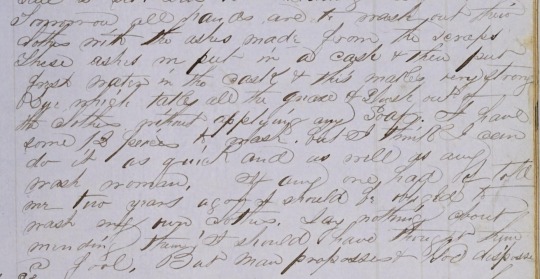
"Tomorrow all hands are to wash out their clothes with the ashes made from the scraps These ashes are put in a cask and then pour fresh water in the cask + this makes a very strong Lye which might take all the grease and slush out of the clothes without applying any soap. I have some 12 pieces to wash but I think I can do it as quick and as well as any wash woman. If any one had of told me two years ago I should be obliged to wash my own clothes, say nothing about mending then I should have thought them a fool. But man proposses + God disposses."
Whaling wife Almira Gibbs, who accompanied her family (Captain and young son) aboard more than one whaler had her own recipe for soap, despite Haviland's assertion that it wasn't necessary:
"1 lb castile soap 1 1/4 lb soda 6c worth borax add 5 pts water and let it simmer till it is all dissolved, take it off and add 9 pts water and let it cool."
Whaling wives aboard also complained about laundry and the difficulty of doing it aboard ship. The moldering of clothes in such a damp environment, the constant roll of the vessel sometimes overturning one's tub or making ironing dangerous, having to wait for rainfall for fresh water, and a sunny day for actually performing said wash, were constant features in wives' laments. Mary Lawrence, aboard the Addison in 1860 sarcastically wrote about her laundry attempt thwarted by the weather one July.

July 30 A wonderful circumstance. When we were called this morning, the sun was shining bright. “Now for a washing day,” thought I, “if it is Saturday.” So I went to work; had a large wash, it being four weeks since I had had one before. Just as I got about half through, the fog came thicker than I ever saw it before. I was obliged to put my white clothes in soak and dry the colored clothes in the cabin.
She also mentioned her young daughter Minnie who "took her little tub and washed her dog's bedclothes, for Jip has had a bed all the season that had to be made up like anybody's bed".
Sighting whales at any point would also put an interruption to the wash. This photo taken aboard the Sunbeam by Clifford Ashley in his brief 1904 research trip shows men hoisting up the whaleboats after taking a small whale, their Sunday laundry still hanging between the davits.

I'll close with whaling wife Mary Brewster's description of a wash day following the trying out of a whale on her husband's ship Tiger, one winter day in Magdalena Bay 1847.
"Calm pleasant weather. Employed in sewing till 4 this afternoon, when I went on deck, where I found every part, and everything about, very nice and clean. The sailors all washing up their dirty clothes, both trypots full boiling in ley [lye] and the rigging hung full. A few garments floating which had taken flight overboard to save washing. All presented a lively spectable and I could say with all hands, farewell to Greybacks [lice]."
425 notes
·
View notes
Text

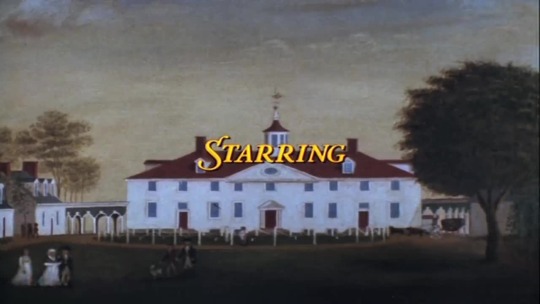

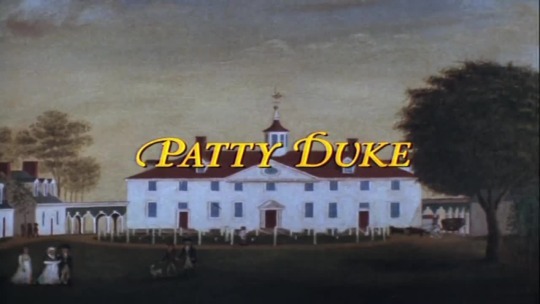
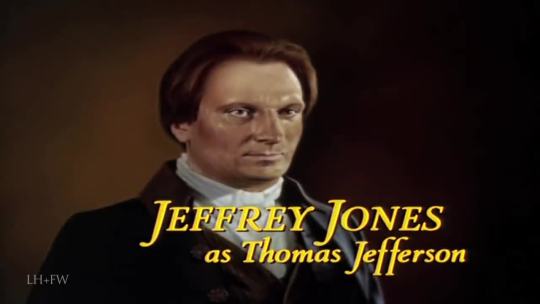


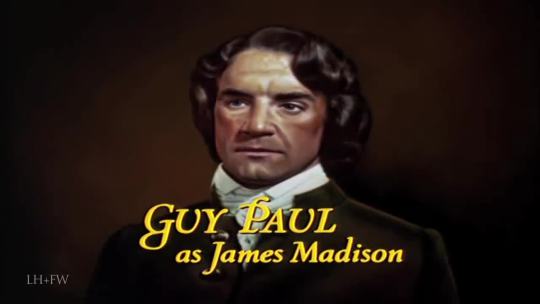
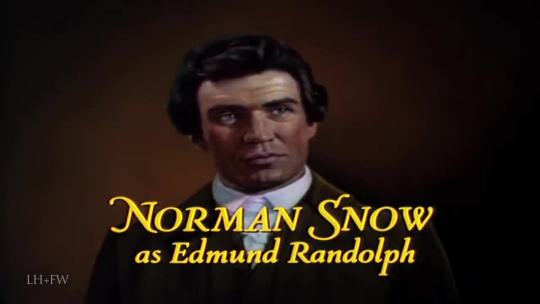
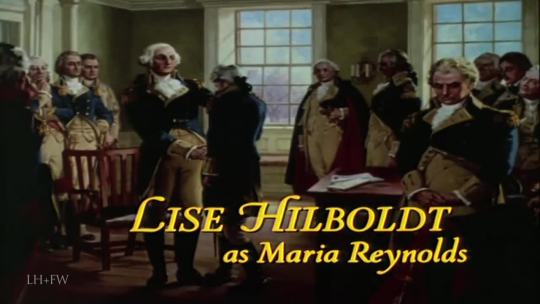
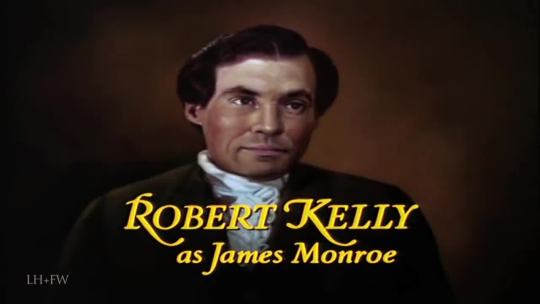




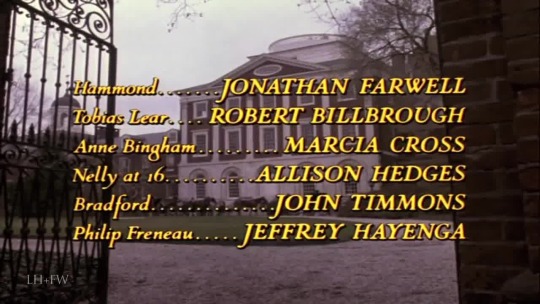
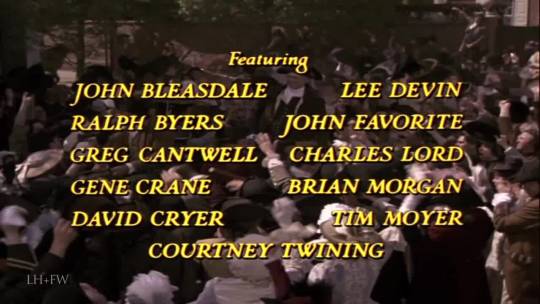

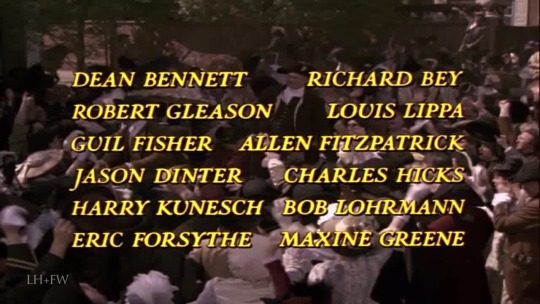

George Washington II: The Forging of a Nation - CBS - September 21-22, 1986
Historical Drama (2 episodes)
Running Time: 190 minutes
Stars:
Barry Bostwick as George Washington – Commander-in-Chief of the Continental Army, and later first President of the United States
Patty Duke Astin as Martha Washington – Wife of George Washington
Jeffrey Jones as Thomas Jefferson
Richard Bekins as Alexander Hamilton
Penny Fuller as Eliza Powel
Eve Gordon as Elizabeth Schuyler Hamilton
Marcia Cross as Anne Bingham
Guy Paul as James Madison
Norman Snow as Edmund Randolph
Robert Kelly as James Monroe
Lise Hilboldt as Maria Reynolds
Haviland Morris as Henrietta Liston
Daniel Davis as Patrick Henry
Richard Fancy as William Duer
Farnham Scott as Henry Knox
Nicholas Kepros as John Jay
#George Washington II: The Forging of a Nation#TV#1986#Historical Drama#CBS#Barry Bostwick#Patty Duke#Jeffrey Jones#Daniel Davis#Richard Bekins#Penny Fuller#Guy Paul#Robert Kelly
9 notes
·
View notes